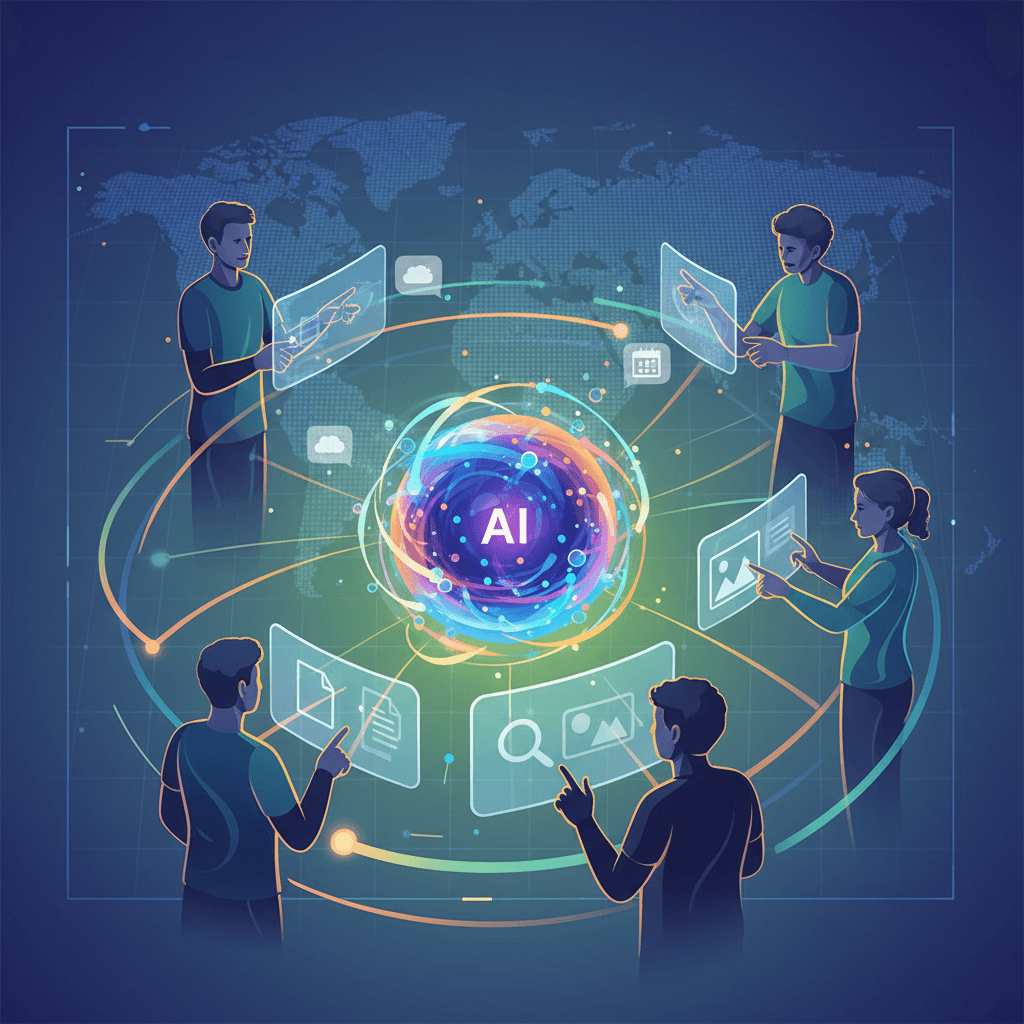OpenAI Launches Global ChatGPT Group Chats, Making AI Collaborative for All
Transforming AI from solo assistant to collaborative partner, enabling up to 20 users to interact and co-create seamlessly.
November 21, 2025

OpenAI has officially launched its group chat feature for ChatGPT worldwide, making the collaborative AI experience available to all users across its Free, Go, Plus, and Pro subscription plans. The global rollout commenced just a week after a successful pilot program in Japan, New Zealand, South Korea, and Taiwan, signaling the company's confidence in the feature's stability and appeal.[1][2][3][4] This development transforms ChatGPT from a primarily individual assistant into a shared conversational space where multiple users can interact with the AI simultaneously, opening up new possibilities for collaboration, planning, and social interaction. The feature allows up to 20 participants in a single chat, aiming to integrate AI assistance seamlessly into group dynamics for both personal and professional use.[1][5][2][3]
The new group chat functionality is designed for intuitive use, enabling users to invite friends, family, or colleagues into a shared conversation with ChatGPT.[6][7] To initiate a group session, a user can simply tap a dedicated icon and share an invitation link.[6][3] Once in the chat, participants can collectively prompt the AI, share files, upload images, and utilize tools like web search and image generation.[5][2] OpenAI has specifically trained the AI to navigate the social nuances of a multi-person conversation. The chatbot is designed to follow the flow of the discussion, deciding when to contribute and when to remain silent based on conversational context.[6][8][3] Users can also directly address the AI by mentioning "ChatGPT" to ensure a response.[6][8] Further enhancing the interactive experience, ChatGPT can react to messages with emojis and even use participants' profile photos to create personalized images within the group.[6][3][9]
Underpinning the group chat experience is OpenAI's GPT-5.1 Auto model, which intelligently selects the most appropriate AI model for a response based on the prompt and the subscription tier of the user it is addressing.[5][10] This means the quality and nature of the AI's response can vary between a free user and a Pro subscriber within the same chat. A significant technical detail is that usage rate limits are only applied when ChatGPT itself responds, allowing human participants to converse freely without quickly depleting their allotted interactions.[9][10] These conversations are housed in a distinct section of the user interface, keeping them separate from an individual's private chat history.[6] OpenAI has provided a range of potential use cases, from planning trips and meals with friends to collaborating on work projects and settling debates.[6][8][4]
Privacy and user control have been central considerations in the design of the group chat feature. OpenAI has emphasized that personal ChatGPT memory and custom instructions from individual accounts are not shared or used within group chats.[6][7][8] The AI does not create new memories from these shared conversations, ensuring a degree of separation between personal and group interactions.[5][3] In terms of moderation, any participant can remove another from the chat, with the exception of the original creator.[1][5] For younger users, specific safeguards are in place; if a user under the age of 18 joins a group, the platform automatically activates more sensitive content filters for all participants.[5][7] Furthermore, parents have the option to disable the group chat feature entirely through parental controls.[5][3]
The introduction of group chats marks a significant step in the evolution of AI assistants, positioning them as collaborative partners rather than solitary tools. This move places ChatGPT in more direct competition with other AI-powered collaborative platforms and reflects a broader industry trend toward integrating AI into social and professional workflows. By making this feature available across all subscription tiers, including the free version, OpenAI is ensuring wide accessibility and encouraging broad adoption.[1][2][9] As the company continues to gather user feedback from this global release, further refinements are expected, potentially shaping the future of how teams and social groups leverage artificial intelligence for collective tasks and creative endeavors.[6][4] The launch represents not just a new feature, but a strategic expansion of ChatGPT's role in daily digital life.